Intentar ORO - Gratis
EDGING SHEET GOODS
Woodcraft Magazine
|February-March 2020
How to hide that ugly core

When making casework, it’s easier and more economical to use plywood, MDF, and other sheet goods instead of solid lumber for primary parts. The problem is that you end up with sawn edges that expose the plies or composite material making up the core. Some modern furniture incorporates that look into the design, but for quality casework, it’s better to cover the edges with solid wood. I’ll discuss some of the myriad options here. Keep in mind that, as with everything, there are pros, cons, and trade-offs for each method. So before choosing an edge treatment, consider where the project will live, its level of use, your tool arsenal, and how much work you want to put into it.
Basic approaches
Veneer tape is the most convenient edging to apply. Available in a variety of wood species, these strips are coated on one side with heat-sensitive glue, and can be applied with a household iron and hardrubber roller. Made for edging 3/4"-thick panels, the tape is typically 7⁄8" wide to allow for trimming. On the downside, it’s neither heatresistant nor particularly durable, so don’t use it on work that might sit near a heat source or endure heavy use, such as tabletop edges.
Esta historia es de la edición February-March 2020 de Woodcraft Magazine.
Suscríbete a Magzter GOLD para acceder a miles de historias premium seleccionadas y a más de 9000 revistas y periódicos.
¿Ya eres suscriptor? Iniciar sesión
MÁS HISTORIAS DE Woodcraft Magazine
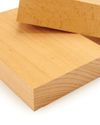
Woodcraft Magazine
Beech
Plain looks, but a solid performer
4 mins
August - September 2023
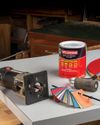
Woodcraft Magazine
Working with PLASTIC LAMINATE
Adding a durable, smooth, and colorful surface to your work
5 mins
August - September 2023
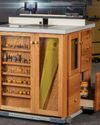
Woodcraft Magazine
High-Tech ROUTER TABLE
A state-of-the-art shop essential
6 mins
August - September 2023

Woodcraft Magazine
Albers-Inspired NESTING TABLES
A colorful array of Bauhaus utility
5 mins
August - September 2023

Woodcraft Magazine
Desktop ORGANIZERS
Mini modules for your modern workspace
4 mins
August - September 2023

Woodcraft Magazine
Joiner's MALLET
A hard-hitting shop hammer
3 mins
August - September 2023
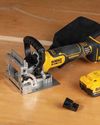
Woodcraft Magazine
Battery-backed biscuiting
DeWalt 20V Max XR Biscuit Joiner
3 mins
June - July 2023
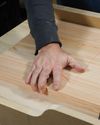
Woodcraft Magazine
Crosscut SLED
A basic build of a crucial table saw accessory
6 mins
June - July 2023
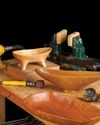
Woodcraft Magazine
Power-carving BOWLS
Tools and techniques for sculpting
2 mins
June - July 2023

Woodcraft Magazine
Library STEPS
Mitered box joints give rise to an updated classic
5 mins
June - July 2023
Translate
Change font size
